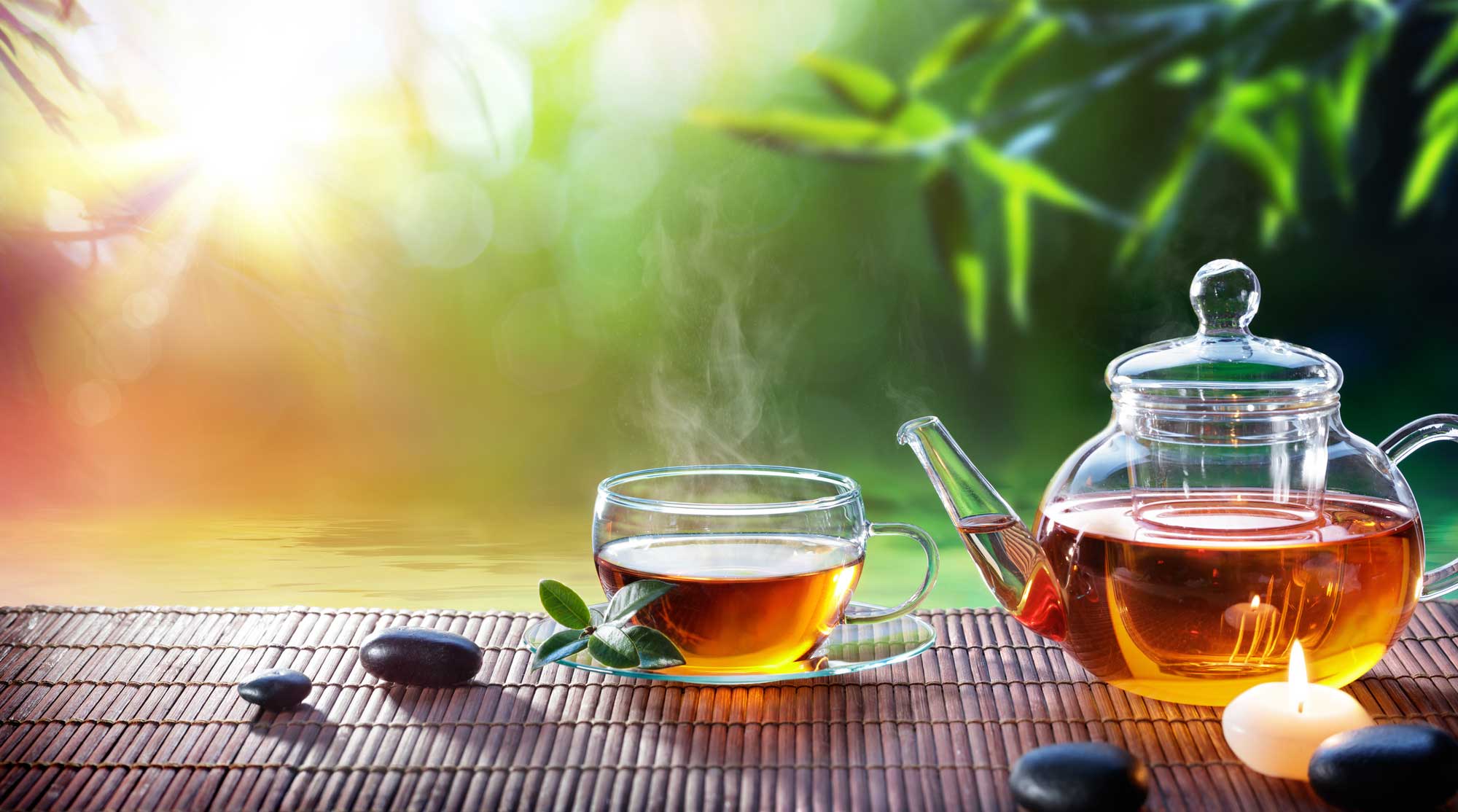When exploring the vast world of tea, the variety can be overwhelming, with so many different types of tea, each with its own distinct flavor and history. When you don’t know where to look for the perfect cup of tea, it helps to know the types and attributes.
Black Tea
Black tea is the most commonly served tea in the Western world and is the standard in any restaurant.
The strongest type of tea in both flavor and caffeine levels due to the oxidization process the leaves go through, when steeped, it creates a dark, reddish-brown liquid.
Black tea comes in many types and flavors, from naturally processed leaves to blends with added artificial flavors.
Here are some black teas to start your experimentations with:
- Earl Grey (tastes of bergamot and vanilla)
- Lapsang souchong (a strong-smelling smoked tea favored by scotch drinkers)
- Masala chai (a mixture of black tea and Indian spices such as cinnamon, clove and nutmeg)
- Black Ceylon (a fairly standard, high-quality black tea)
Green Tea
Green tea is delicate in flavor, has mild levels of caffeine and boasts many health properties thanks to its high levels of antioxidants.
Green tea leaves do not go through the oxidization process and so have a milder taste than black, white and oolong teas.
Properly steeping green tea, which involves using cooler than usual temperatures for water so as to avoid burning the leaves, and a maximum steep time of 3 minutes, is essential to get the desired, subtle taste.
With its origins in China and Japan, green tea is often used as a meditative aid and is known as a subtle and calming beverage. As with black tea, green tea comes in many types and flavors:
- Sencha tea (a sprig of a leaf with a mild, grassy flavor)
- Gunpowder tea (hand-rolled leaves which resemble pellets that unfurl when steeped and release a hint of smokiness)
- Matcha (a distinctly earthy, stoneground green tea powder that can be combined with water to make tea, or steamed with milk to make lattes).
White Tea
White tea is the rarest tea in the world and is considered a premium tea.
It undergoes virtually no processing after it is picked, has very low levels of caffeine, and is distinguished by the small white hairs that remain on the leaves after it has been sun-dried.
So why bother with white tea? Because it has a host of health benefits, from improving the vitality of skin and hair to being used as part of a treatment plan for diabetes and cancer. White tea is often characterized by very subtle, but distinct flavors.
The two most common white teas are:
- Yin Zhen (a high-quality tea made exclusively from young buds that is light and sweet in taste)
- Bai Mu Dan (a slightly darker tea of buds combined with young leaves that has a full body and floral aroma).
Oolong Tea
Oolong tea is a semi-oxidized, semi-fermented leaf with a unique flavor that sets it apart from other teas. Due to the way oolong tea is processed, it has more caffeine than green tea, but less than black tea.
Oolong teas have fewer levels of antioxidants than green teas, but have been shown to have other health benefits, such as reducing blood pressure and heart disease prevention.
Primarily from China and Taiwan, many oolong teas are characterized by tightly rolled leaves that reveal a distinctly sweet, floral taste and aroma when steeped and allowed to unfurl.
Herbal Tea
Herbal teas, which are also commonly referred to as tisanes, can be described as the infusion of any combination of herbs or spices and do not contain caffeine.
The combination of options for herbal tea is endless, and the health benefits that these teas offer are numerous and varied.
Some common herbal teas include:
- Peppermint tea (a light, refreshing tea that’s great for settling your stomach)
- Ginger tea (a spicy infusion that can curb nausea and upset stomachs)
- Chamomile tea (a strong, calming floral tea with a very distinct flavor)
- Dandelion tea (a detoxifying tea for your liver).
Red Tea
Red, or rooibos tea, is distinct from other teas in that it is not from a tea plant, but rather comes from a South African bush. It is naturally decaffeinated and boasts many health benefits due to its high levels of antioxidants.
Rooibos is widely known as a red tea due to its color and the red infusion it creates when steeped; however, unoxidized rooibos tea, or green rooibos, is also delicious and has a taste that more closely resembles a mild black tea.
A cup of plain organic rooibos tea, with no additives, is somewhat sweet and smooth, but it is a very versatile tea and is easily blended with other herbs, spices or flavors to create a whole range of comforting teas.
Thanks to its long history, the vast world of tea has spread its leaves into virtually every corner of the world.
Whether it’s for your health or for ceremony, in a steaming hot cup or a sweating cold glass, don’t let the overwhelming selection of teas now widely available prevent you from jumping in with both feet.
Don’t hesitate –- there is a cup of tea out there, waiting for you.

Leave a Reply